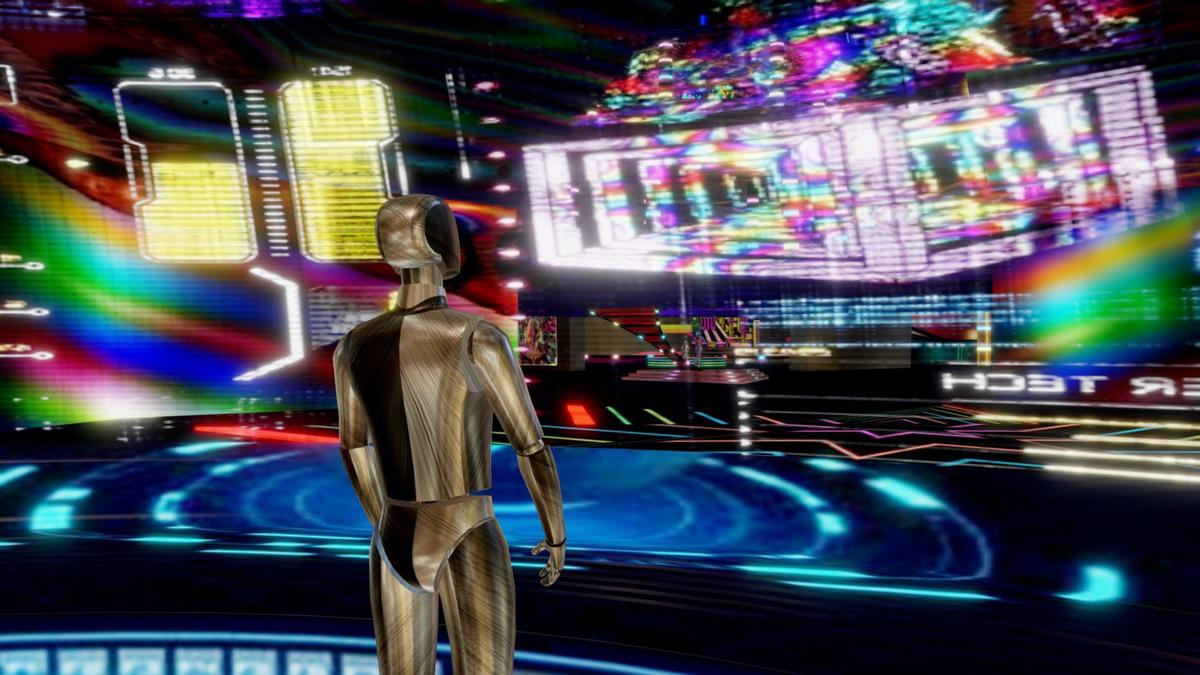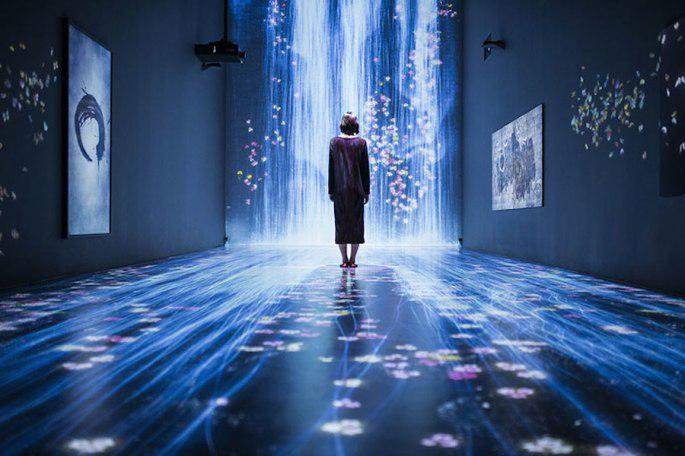The Evolution of Virtual Reality in Art
Virtual reality has revolutionized the art world, creating new avenues for interaction and expression. As VR technology progresses, artists can expand their creative spaces beyond physical limitations, offering audiences direct access to their work without travel. VR headsets now allow visitors to explore iconic painters' studios or wander through galleries displaying digital-only artworks.
VR art exhibitions have emerged with a fresh approach to engagement. Viewers become part of the art, moving freely within an artist's imagined universe. This shift has fostered deeper connections, bringing art directly to the viewer. The boundaries between observer and creator have blurred, making every interaction unique.
VR technology has ushered in an exciting era for the artistic process, embracing tools that amplify and redefine imagination. Digital innovators like Refik Anadol use data and algorithms to reimagine our perceptions, merging artistic expression with science. In these virtual spaces, our understanding of light, sound, and space is challenged, redefining art's potential.
Museums have adopted VR to revitalize their exhibits, reaching wider audiences. At the Franklin Institute, viewers can explore environments from ocean depths to outer space. These digital experiences combine interaction with education, transforming learning into an active, exciting journey.
Despite its potential, VR presents challenges for art institutions:
- Equipment and software costs can escalate quickly
- Museums often face issues with hardware reliability and hygiene
- Some users experience simulation sickness
However, these obstacles are minor compared to VR's significant role in future art presentation and appreciation.
Artists, collectors, and galleries are embracing this technological revolution, integrating VR into both viewing experiences and creative processes. Platforms like VR-All-Art have emerged, providing creators a virtual stage to exhibit and sell their work, overcoming physical and geographical constraints.
While physical objects retain their unique appeal, VR has expanded the definition of art, offering dynamic alternatives that broaden our understanding and interaction with creative works. As we progress, it's clear that VR is not just an addition but an evolving platform reshaping storytelling and experiences, reinvigorating connections between art, artist, and viewer.
Key Features of VR Art Exhibitions
The key features of a VR art exhibition shape an engaging experience, transforming observation into active participation. The VR headset serves as your gateway to another dimension. Once on, you're transported into an immersive space where creativity flourishes.
This experience goes beyond observing art; it's about entering it. Interactive elements invite engagement, exploration, and sometimes manipulation of the artwork. These digital wonders might transport you from a serene landscape to a bustling art studio in an instant. You're not just seeing the artist's vision; you're inhabiting it, with each detail of the digital canvas responding to your movement and curiosity.
Sound plays a crucial role in this digital landscape. Every step, gaze, and gesture is accompanied by an auditory backdrop enriching the visual experience. From the gentle rustle of virtual leaves to the deep hum of antiquity or the lively chatter of a recreated 19th-century Parisian café, sound becomes as tangible as color, enhancing the atmosphere and drawing you deeper into the story.
Visuals in VR exhibitions elevate the art experience, presenting dynamic, evolving vistas that unfold as you explore. The fusion of artistic innovation with cutting-edge technology allows for breathtaking displays of light and texture, showcasing art in previously unimaginable ways. Even the tiniest brushstroke or chiseling technique feels within reach, rendered in detail by high-resolution graphics that keep your senses engaged.
These features collectively craft a VR experience that enables a deeper connection with art. They allow audiences to inhabit masterpieces, blurring the lines between spectator and creator. In this new space, the boundaries of space and time dissolve, offering an uncharted journey where the story is as much about the wanderer as it is about the wonder.

Notable VR Art Exhibitions Worldwide
The global landscape of virtual reality has sparked a diverse array of VR exhibitions, each offering a unique artistic experience. From futuristic installations to carefully crafted historical recreations, these exhibitions showcase the pioneering spirit of VR art and its potential to reshape the global art scene.
Smithsonian American Art Museum's "Beyond the Walls"
This exhibition transforms the traditional museum visit. Visitors interact with iconic pieces like Frederic Edwin Church's "Aurora Borealis" in an almost tangible way. Placed before the painting, you're suddenly transported to a remote Icelandic mountaintop, surrounded by the vibrant dance of the aurora. Olafur Haraldsson's 360-degree footage provides a striking contrast to Church's painted masterpiece, allowing audiences to contemplate the interplay of art and nature.
teamLab Planets in Tokyo
Known for its boundary-pushing installations, teamLab creates an environment where digital koi swim around visitors' legs, blooming into flowers at the slightest touch. Visitors wade through water-filled rooms barefoot, merging with the art in an experience as fluid and dynamic as the glowing flora and fauna that populate the space.
Musée d'Orsay's "Van Gogh's Palette"
This exhibition provides an intimate look into Van Gogh's creative universe. Museumgoers find themselves seated in Doctor Gachet's drawing room, quickly transported to explore Van Gogh's swirling blues and sunflowers with an interactive palette. It's an invitation to travel through time, space, and emotion—to pick up the maestro's brush and paint the world anew.
Port Des Lumières in Hamburg
This installation embraces immersive storytelling. Visitors embark on photon journeys, unraveling light into a symphony of perception that enthralls children and adults alike.
Khroma in Berlin
Khroma pushes boundaries with installations that question reality itself, reflecting on our interconnectedness with technology and each other.
WNDR Museum in Boston
WNDR Museum takes a different yet equally compelling approach. Here, art and technology coexist across 17,000 square feet of interactive installations. Whether tip-toeing across a light floor or watching the weather's wrath in "Insideout," visitors discover art that reflects the world's unpredictability—a masterful interplay of storm and calm rendered in glass and light.
These VR exhibitions collectively showcase an art form that's varied and vibrant, introducing international audiences to possibilities beyond traditional mediums. As artists and curators continue to explore VR's potential, they're crafting a shared experience woven from every human sense, boundless creativity, and digital innovation that unifies museum halls globally.
Challenges and Opportunities in VR Art
Virtual reality, while a vibrant tool in the art world's arsenal, brings challenges that require creativity to overcome. One significant hurdle is the cost barrier. High-tech VR equipment and sophisticated content development can require substantial financial investment. This poses difficulties for smaller galleries or independent artists with limited budgets. However, as technology becomes more widespread, prices may decrease, mirroring the democratization of once-expensive technologies like smartphones and personal computers.
Technology limitations also play a role, as even the most impressive digital landscapes are constrained by current VR hardware and software capabilities. Glitches, outdated hardware, and software issues can sometimes detract from an otherwise captivating experience. Additionally, not every visitor feels comfortable or tech-savvy enough to navigate these immersive worlds easily.
An often-overlooked obstacle is accessibility—not just in terms of who can experience VR, but considering varying levels of physical ability. Designing VR experiences that are inclusive and welcoming to all users is crucial. This means taking a flexible approach that accounts for diverse needs and ensuring that everyone can engage with a VR exhibition without barriers, similar to making physical museums accessible to all.
However, challenges often come with opportunities. For artists and curators, VR opens doors to new audiences unrestricted by geography. A single exhibition can reach thousands of users globally once uploaded to a digital platform. Imagine students from different continents exploring the same virtual journey through the Musée d'Orsay or witnessing teamLab's boundary-defying art installations without needing a passport.
This wide reach also allows for the creation of previously unimaginable art forms. Artists can craft multisensory stories that evolve in real-time as viewers interact with the environment. The medium provides a platform for expressing stories that can be experienced rather than merely observed, offering a richer canvas for creativity to flourish.
Potential Solutions and Future Trends
- Collaboration between tech companies and cultural institutions
- Government grants and private sponsorship
- Greater integration of augmented reality (AR) with VR
- Emergence of mixed reality (MR) as the next frontier
- Adoption of blockchain technology for secure ownership and provenance tracking
In conclusion, virtual reality in art, though still a young medium, promises vast possibilities. The challenges it faces—financial, technological, and accessibility-related—are merely stepping stones on the path to innovation and inclusivity. With each solution found, the horizon expands, ushering in a period where art in a virtual context is not an imitation of reality but a pioneering force driving new dimensions of human expression and cultural enrichment.
The Future of VR in Art
Virtual reality is set to propel the art world into new territories. VR technology promises to redefine artistic creation, consumption, and expression in exciting ways.
Imagine art exhibitions becoming adventures of discovery, with immersive experiences that adapt to each viewer. Progress in VR could make these encounters richer, blending visual art with tactile engagement. Enhanced haptic feedback might allow us to feel textures and temperatures, adding depth to the virtual gallery experience.
As technology evolves, VR-driven art exhibitions could become platforms for collaborative creation. Multiple users might contribute to a digital canvas in real time, transforming exhibitions into dynamic creativity hubs. Artists and viewers could meet in these virtual spaces, fostering global dialogues through co-created artwork.
Eye-tracking technology could enhance audience interaction with art. VR systems could adjust elements based on where you look, creating adaptive pieces that respond to your focus.
As VR devices become more common, art could reach beyond traditional galleries. Artists might release virtual exhibitions accessible to anyone with a VR headset, from city dwellers to rural students. This shift could open up art spaces once limited to a few.
Artificial intelligence could play a role in enhancing VR art experiences. AI might act as a virtual guide, personalizing tours and providing context. This AI-assisted interaction could make VR exhibitions more educational and engaging.
Mixed reality (MR), which merges physical and virtual worlds, promises new creative possibilities. Artists might craft experiences where their works evolve within our environments, blending digital art with everyday surroundings.
As we approach this VR revolution, the potential for artistic expression seems boundless. Tomorrow's VR explorations could transform a simple gallery visit into a journey of personal connection and discovery.
As digital technology transforms art, virtual reality is reshaping how we interact with creativity. VR invites us to reimagine the boundaries of art, offering new ways to experience and engage with artistic expression.
Immersive Art Experiences Around the World
- teamLabPlanets (Tokyo, Japan): A barefoot experience where visitors interact with digital koi that swim around their legs and blossom into flowers upon touch.
- Atelier des Lumières (Paris, France): Housed in a former foundry, this digital art theater immerses visitors in massive projections of famous artworks.
- Superblue Miami (Miami, USA): A 50,000 square foot space featuring installations that push the boundaries of contemporary art, including a mirrored maze and digital environments.
- The LUME (Melbourne, Australia): An AI and VR-infused journey through the life and works of Leonardo da Vinci, including a 360° replica of the Mona Lisa.
VR in Museums: Enhancing the Visitor Experience
Museums worldwide are embracing VR to create immersive tours, interactive exhibits, and breathtaking visual narratives. For example:
- The Louvre launched 'Mona Lisa: Beyond the Glass', allowing users to discover intricate details about the painting through interactive design and animated images.
- The Smithsonian American Art Museum offers "Beyond the Walls," a VR experience that transports visitors directly into the museum's galleries, allowing close examination of artworks and interactive elements.
- The National Museum of Natural History in Paris opened its first permanent VR exhibition on evolution, allowing visitors to explore the links between species in a fully immersive environment.
Challenges and Considerations
While VR offers exciting possibilities for art and museums, there are challenges to consider:
- Cost: VR equipment and content creation can be expensive, potentially limiting accessibility.
- Hygiene: Shared VR headsets require careful cleaning to prevent the spread of infections.
- Simulation Sickness: Some users may experience disorientation or nausea when using VR.
- Balance with Traditional Experiences: Museums must find ways to complement, not replace, the experience of viewing physical artworks.
Despite these challenges, the potential of VR in art and museums is immense. As technology advances and becomes more accessible, we can expect even more innovative and engaging experiences that blur the lines between the physical and digital art worlds.





















